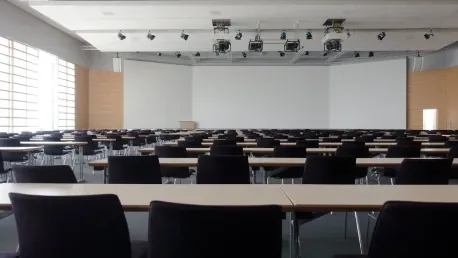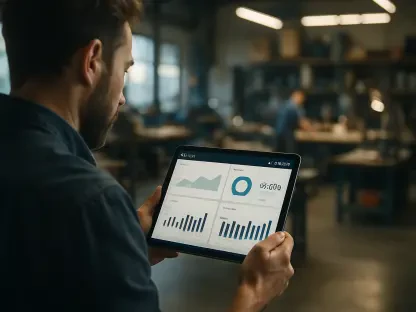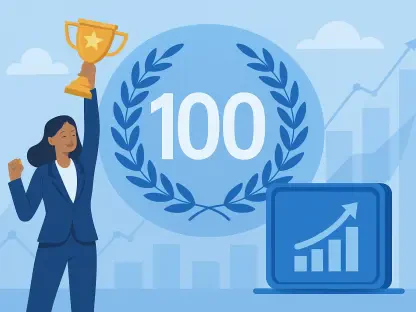President Joe Biden’s recent decision to cancel student loans for 150,000 borrowers has sparked intense discussion, signaling a potentially transformative shift in the landscape of American higher education. For many, this move marks a significant stride in addressing the mounting student debt crisis that has long plagued the nation. With over $183 billion in student loan debt forgiven so far, the implications of this decision extend far beyond individual financial relief, inviting a reevaluation of the overall approach to higher education funding and accessibility.
The Crippling Effect of Student Loans
Personal Stories and Economic Hardships
The staggering burden of student loans has profoundly affected numerous Americans, deterring many from pursuing higher education and consequently limiting their career opportunities. Logan Dole, a young resident of North Idaho, is just one example. Dole chose not to attend college, paralyzed by the fear of incurring substantial debt that could potentially lead to financial ruin. His story is not unique; it mirrors the experiences of countless individuals who see the soaring costs of education as a barrier rather than a gateway to success. Dole’s perspective underscores the argument that student debt forgiveness is not merely a financial issue but a crucial step towards ensuring broader access to education.
The economic ramifications of student debt extend beyond individual suffering to impact the broader national economy. With over $1.7 trillion in student loan debt looming over the U.S., the financial obligations weigh heavily on graduates entering the workforce. Federal loans account for a vast majority, with $1.6 trillion in debt. The average student loan debt of over $37,000 per borrower illustrates the scale of the crisis. In Washington alone, nearly $29 billion is owed, averaging $36,000 per person. In Idaho, the figures are similarly daunting, with just over $7 billion in debt and an average of slightly over $33,000 per resident. These numbers paint a stark picture of the economic strain placed on millions of Americans, influencing their spending, saving, and investing capabilities.
Borrower Defense Program and Institutional Accountability
The borrower defense program, which played a pivotal role in Biden’s recent cancellation decision, reflects a critical mechanism for addressing injustices faced by students duped by fraudulent institutions. Originally established in 1994, the program gained renewed attention during the Obama administration amidst numerous scandals involving for-profit colleges. Biden’s recent cancellation focused on borrowers who attended defunct universities owned by the Center for Excellence in Higher Education. These institutions were found guilty of misleading students about loan terms, promising educational opportunities that never materialized.
The borrower defense program provides a pathway to loan forgiveness for those deceived by their colleges, offering a form of restitution to those who suffered due to unethical practices. This program represents a broader push towards holding educational institutions accountable for their promises and ensuring students are not left bearing the financial brunt of institutional failures. By canceling the debts of thousands of students who were misled, Biden’s administration aims to correct past wrongs and set a precedent for greater oversight and accountability in higher education.
Political and Economic Implications
Bipartisan Reactions and Legal Challenges
Biden’s ambitious moves to cancel student debt have not escaped sharp critique, particularly from Republican circles. The decision to forgive $183 billion in student loans is historic, outstripping efforts by any previous president. Yet, it has faced staunch opposition, with critics like President Trump denouncing such measures as “vile” and “illegal.” Political backlash intensified following the Supreme Court’s 2023 decision to block an additional $400 billion in cancellations, reflecting the contentious nature of the issue on Capitol Hill. What emerges from this opposition is a deeply divided landscape where student debt relief becomes a battleground of ideological and legal disputes.
Despite political resistance, the economic benefits of student debt relief are substantial and multifaceted. Advocates argue that a population unburdened by crippling debt can contribute more robustly to the economy. Logan Dole, for example, emphasizes that financially stable individuals are better equipped to invest in homes, start businesses, and bolster economic growth. He suggests that a society free from monumental student debt can lead to a healthier, more vibrant economy. This perspective highlights the potential for student loan forgiveness not just to alleviate individual distress but to create ripple effects that benefit the country’s financial stability and overall prosperity.
Future of Higher Education
President Joe Biden’s recent initiative to cancel student loans for 150,000 borrowers has sparked significant discussion, potentially heralding a transformative change in American higher education. This move is viewed by many as a crucial step in alleviating the extensive student debt crisis that has burdened the country for years. With over $183 billion in student loans forgiven to date, the repercussions of this policy are far-reaching, offering more than just individual financial reprieve. It encourages a broader reconsideration of how higher education is funded and made accessible in the United States, addressing concerns over accessibility and affordability that have long been issues. The decision to cancel student debt opens dialogue about the future of education funding and the role of government in ensuring equitable access to higher education opportunities. By relieving the financial burden on countless Americans, the policy not only provides immediate relief but also sets a precedent for future approaches to managing and mitigating student debt and higher education costs.









